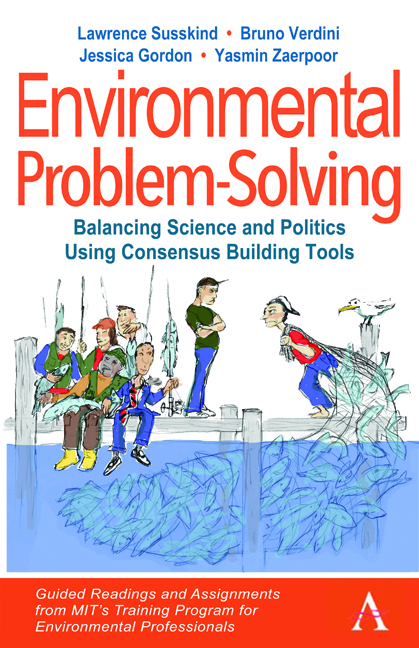 Environmental Problem-Solving: Balancing Science and Politics Using Consensus Building Tools
Environmental Problem-Solving: Balancing Science and Politics Using Consensus Building Tools Book contents
- Frontmatter
- Contents
- Acknowledgments
- Credits and Permissions
- Introduction
- Unit I: Influencing The Environmental Policy-Making Process
- Unit II: Ethical Dilemmas In Environmental Problem-Solving
- Unit III: Developments In Policy And Project Analysis
- Unit IV: Collective Action To Solve Environmental Problems
- Final Exam
- Conclusions
- Biographies
- References
- Index
Introduction
Published online by Cambridge University Press: 15 December 2020
- Frontmatter
- Contents
- Acknowledgments
- Credits and Permissions
- Introduction
- Unit I: Influencing The Environmental Policy-Making Process
- Unit II: Ethical Dilemmas In Environmental Problem-Solving
- Unit III: Developments In Policy And Project Analysis
- Unit IV: Collective Action To Solve Environmental Problems
- Final Exam
- Conclusions
- Biographies
- References
- Index
Summary
Environmental problem-solving is at the heart of every decision about allocating natural resources and crafting standards to protect public health and safety. Elected and appointed officials make problem-solving choices every day that affect their constituents’ lives, but they cannot ensure that everyone gets what they want and need. Environmental problem-solving involves trade-offs. Sometimes policy makers make decisions that respond to immediate pressures but that sacrifice the interests of future generations. Often, they respond to pressures from some groups but not others. In other words, environmental problem-solving almost always turns out to be harder than it first appears.
For one thing, there are likely to be competing diagnoses of what is causing the environmental problem. In the case of air or water pollution, for example, there may be differences in view about its causes and about how great a threat it poses. In addition, there are sure to be conflicting notions about how best to respond. Is the level of pollution a serious threat to long-term ecosystem survival? Is it a threat to everybody or only to a vulnerable subset of the population? Will it eventually dissipate of its own accord? Or will it continue to get worse, eventually reaching a tipping point where remedial action is no longer possible? Is the effect of the pollution the same everywhere or only in certain locations? Is there a new (pollution control) technology coming along that might render the pollution harmless? Or do we need to ban a particular industrial process until we come up with a less risky way of doing things? What is the likely cost if we do nothing? Who will bear that cost? Do we have to compensate those who have already been adversely affected? Where should responsibility rest for making sure that future pollution levels are safe? How should pollution control measures be enforced? What is a reasonable amount to spend to eliminate or reduce pollution? What funds should be invested in research and development to increase our understanding of pollution risks and the likely effectiveness of alternative cleanup methods?
- Type
- Chapter
- Information
- Environmental Problem-Solving: Balancing Science and Politics Using Consensus Building ToolsGuided Readings and Assignments from MIT's Training Program for Environmental Professionals, pp. 1 - 4Publisher: Anthem PressPrint publication year: 2020


